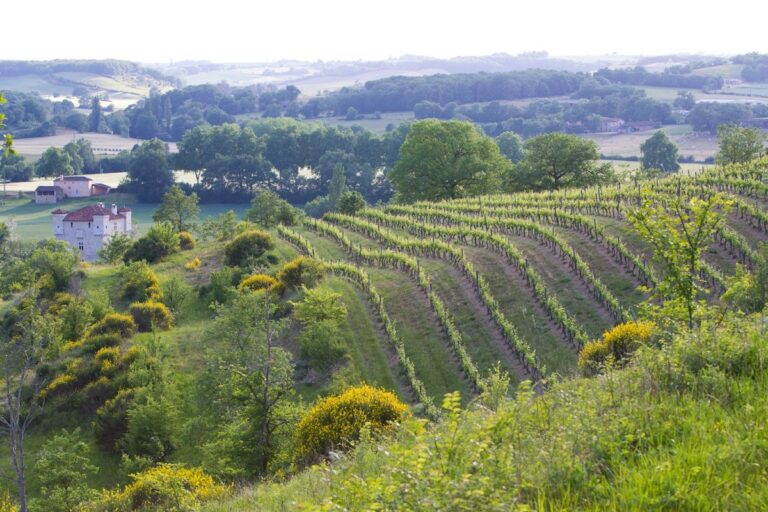Château de Thibault de Termes: A Medieval Castle in Termes-d’Armagnac, France
Visitor Information
Google Rating: 4.4
Popularity: Low
Google Maps: View on Google Maps
Official Website: www.tourdetermes.org
Country: France
Civilization: Unclassified
Remains: Military
History
The Château de Thibault de Termes is situated in the commune of Termes-d’Armagnac, France. It was constructed by medieval French builders from the late 13th century into the early 14th century. The castle was established as a stronghold for the local lords who were vassals to the Counts of Armagnac.
Originally erected for Jean, Count of Armagnac, the fortress occupied a strategic position atop a hill, overseeing the valleys of the Adour and Arros rivers. This location allowed the castle to serve as a defensive outpost, monitoring and protecting the boundaries of the Armagnac province against external threats. The residence belonged to the noble family known as the Armagnac-Termes, who maintained control of the site for several centuries.
Among those who lived within the castle’s walls, Thibault d’Armagnac, son of the founder, is historically significant. He was known for his military service alongside Joan of Arc and provided testimony in her defense during her trial. This association ties the castle to important events during the Hundred Years’ War.
The castle remained in the hands of the Armagnac-Termes family until the upheavals of the French Revolution. Following the revolution, the property was declared national asset and subsequently sold, leading to significant changes in its physical state. Over time, the castle’s main structures were dismantled, and stones from the ruins were repurposed for local constructions, including use in building a railway line.
In the 1960s, a major change occurred when the remaining keep was donated to the local commune by André Boingnères. Restoration efforts were initiated by a heritage organization in the area, focusing on preserving this surviving portion. From 1985 onward, the keep has been used to house a museum dedicated to the history and culture of Gascony. A comprehensive renovation project began in 2020 with the goal of improving interpretive displays related to the late medieval period.
The keep received official recognition for its cultural significance when it was classified as a historic monument by the French Ministry of Culture in 1962.
Remains
The principal surviving element of the Château de Thibault de Termes is its square keep, or donjon, which rises to a height of approximately 36 meters (around 118 feet). This tower, built of stone, features walls nearly two meters thick, designed to withstand attack while also serving as a residence. The robust construction illustrates the dual defensive and domestic functions typical of medieval fortifications.
Inside, the keep comprises six floors connected by a circular stone staircase. Within these levels are three vaulted chambers, each topped with pointed barrel vaults—a type of arches shaped like elongated barrels to support the ceiling. These rooms receive natural light through mullioned windows, which consist of vertical stone bars separating panes. Fireplaces are present in the rooms, indicating areas intended for living or working in comfort despite the keep’s fortress character.
The upper floors incorporate communication galleries, which would have allowed movement and observation within the tower, along with latrines for sanitation. These features highlight attention to the practical needs of those residing there.
Adjacent to the keep, remnants of the original residential building or logis survive in the form of a single large wall extending out from one face of the tower. Additionally, a smaller building connected to this wall includes two arches that have since been blocked up, evidence of architectural modifications over time.
Over the centuries, much of the castle was dismantled, and its stones were reused locally, but the keep remains intact and was restored beginning in the 20th century. The site’s museum within the keep displays exhibits related to the history and cultural traditions of the Gascony region, providing context to the medieval heritage embodied by the structure.
The castle’s materials, primarily stone, and its architectural features such as vaulted rooms and defensive thick walls, attest to its construction period at the turn of the 14th century. The preserved former prison tower continues to stand as a testament to the medieval military and residential architecture of southwestern France.










